In regions where water is scarce, growing a thriving herb garden might seem challenging. However, many herbs naturally evolved in dry Mediterranean climates, making them perfect candidates for water-wise gardening. This comprehensive guide explores drought-tolerant herbs that not only survive but flourish with minimal water, providing fresh flavors for your kitchen and natural remedies for your home.
Whether you’re dealing with water restrictions, living in an arid climate, or simply want to create a more sustainable garden, these drought-resistant herbs offer the perfect solution for the environmentally conscious gardener.
Why Grow Drought-Tolerant Herbs?
Drought-tolerant herbs offer numerous advantages beyond their ability to withstand dry conditions. These resilient plants have adapted to thrive with minimal water, making them ideal for sustainable gardening practices.
Environmental Benefits
- Significantly reduced water consumption
- Lower maintenance requirements
- Improved soil health through deep root systems
- Support for local pollinators and beneficial insects
- Reduced need for chemical fertilizers
Practical Benefits
- Fresh herbs for cooking year-round
- Natural ingredients for home remedies
- Lower water bills and maintenance costs
- Many are perennials that return year after year
- Most thrive in containers and vertical gardens
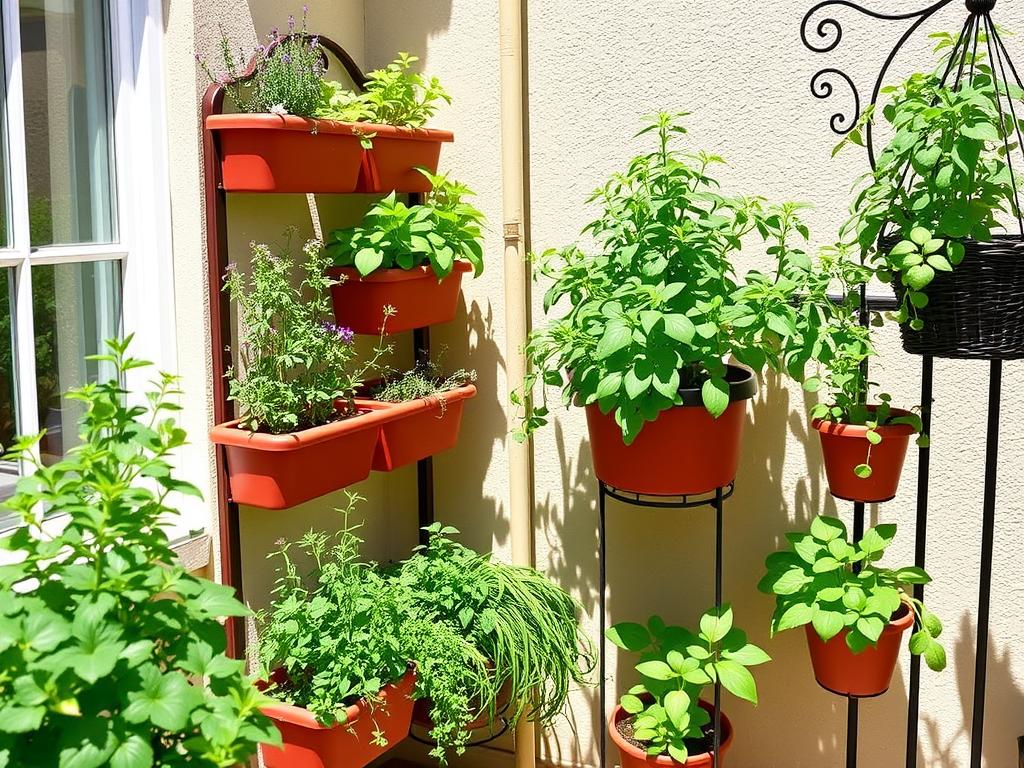
A-Z Directory of Drought-Tolerant Herbs
These herbs have evolved natural mechanisms to conserve water, from silvery foliage that reflects sunlight to deep root systems that access underground moisture. Here’s our alphabetical guide to the most resilient drought-tolerant herbs for your garden.
Aloe Vera
Drought Tolerance: Very High
Growing Requirements: Full sun to partial shade, well-draining sandy soil, minimal watering once established.
Culinary Uses: While not commonly used in cooking, the gel can be added to smoothies and drinks for its nutritional benefits.
Medicinal Uses: The gel is excellent for soothing burns, cuts, and skin irritations. It also has anti-inflammatory properties.
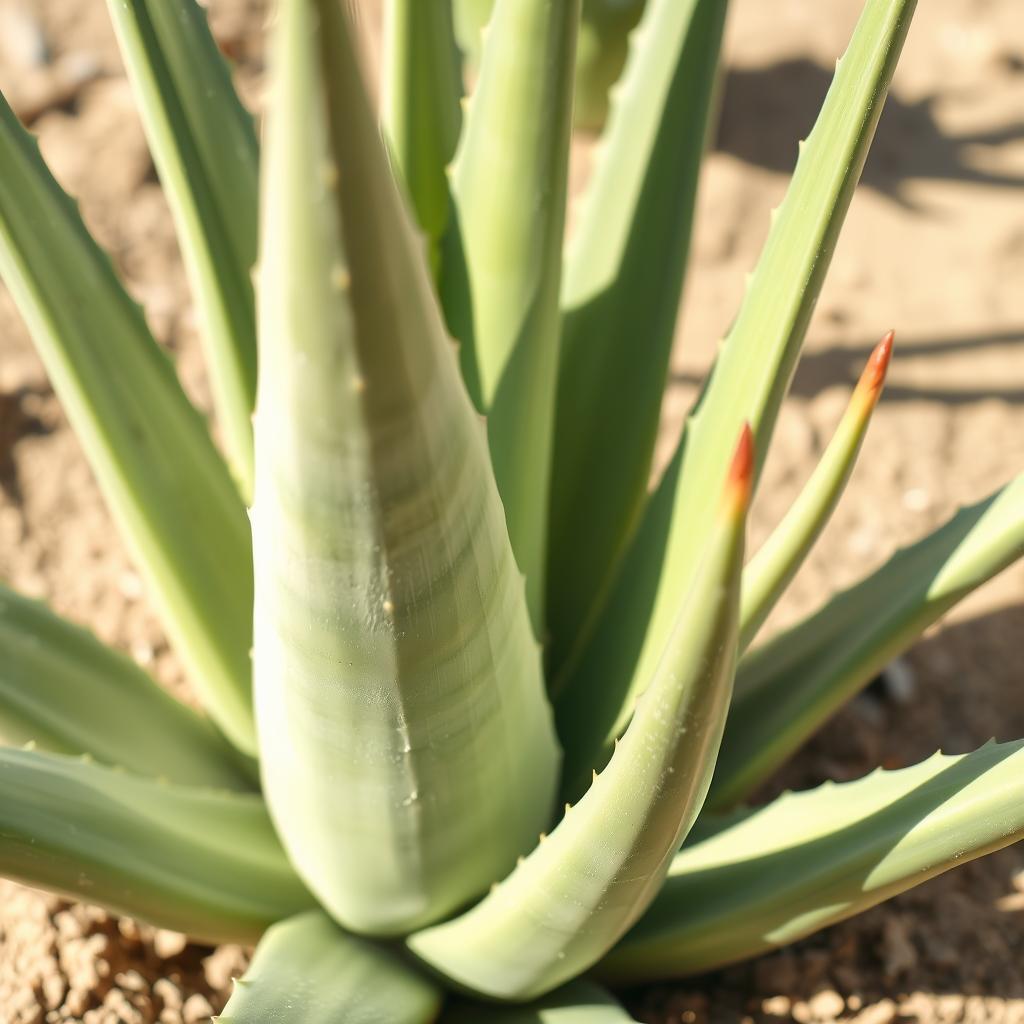
Borage
Drought Tolerance: Moderate to High
Growing Requirements: Full sun, well-draining soil, space to spread as it self-seeds readily.
Culinary Uses: The cucumber-flavored flowers make beautiful garnishes for salads and summer drinks. Young leaves can be added to salads or used as a cucumber substitute.
Medicinal Uses: Traditionally used to reduce inflammation and as a cooling herb. The seed oil is rich in gamma-linolenic acid (GLA).
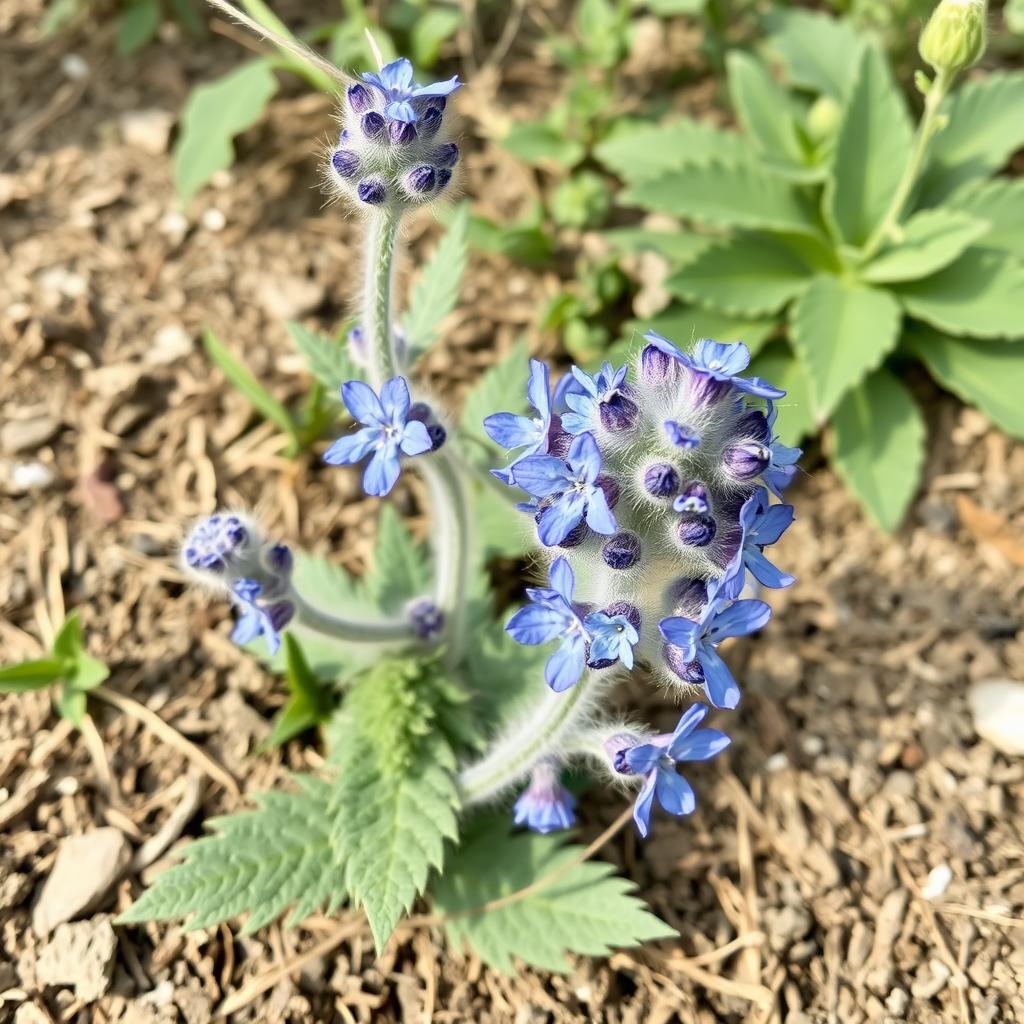
Calendula
Drought Tolerance: High
Growing Requirements: Full sun to partial shade, average soil, deadhead to encourage continuous blooming.
Culinary Uses: The petals add a mild, slightly bitter flavor and beautiful color to salads, soups, and rice dishes.
Medicinal Uses: Excellent for skin healing, calendula is used in salves and oils for wounds, burns, and skin irritations. It has anti-inflammatory and antimicrobial properties.
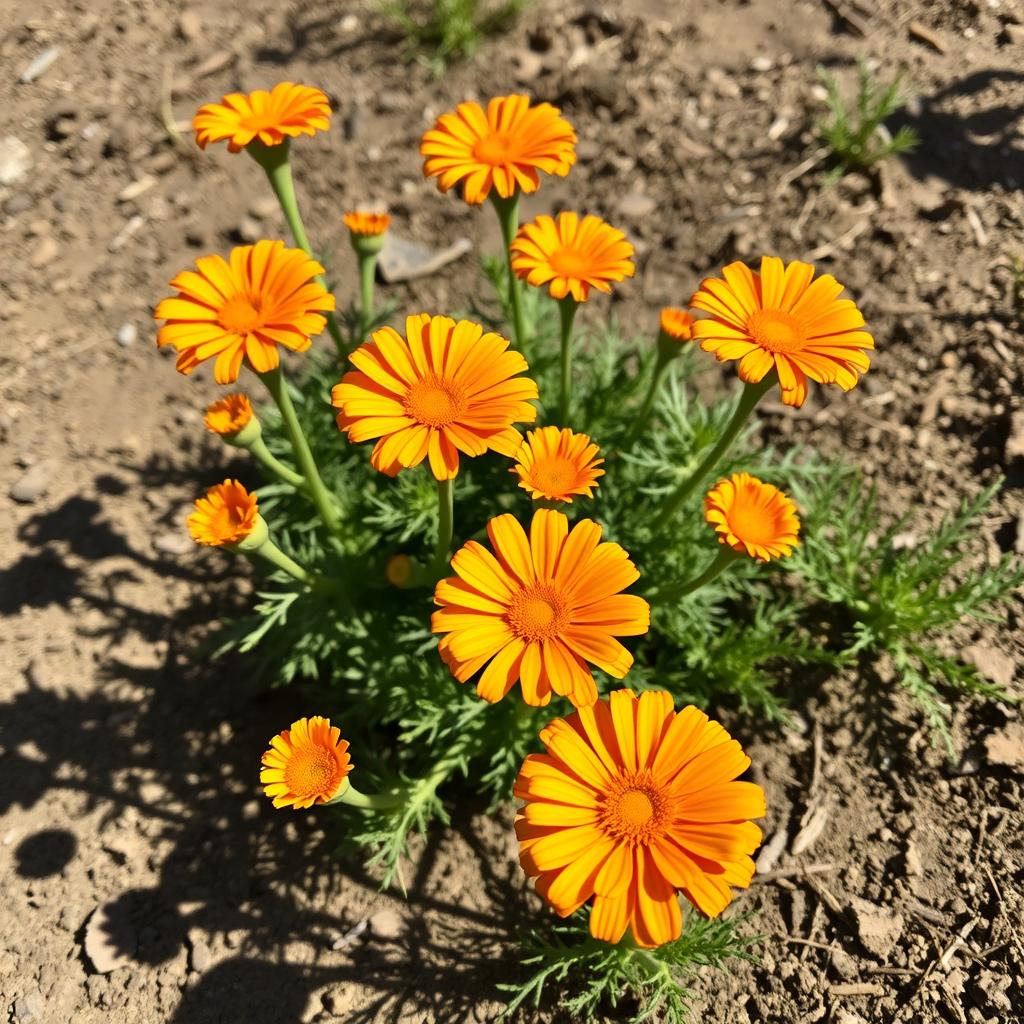
Echinacea (Coneflower)
Drought Tolerance: Very High
Growing Requirements: Full sun, well-draining soil, tolerates poor soil conditions.
Culinary Uses: Primarily used for tea rather than cooking.
Medicinal Uses: Well-known immune system supporter, particularly for upper respiratory infections. The root and flower are used in tinctures and teas.
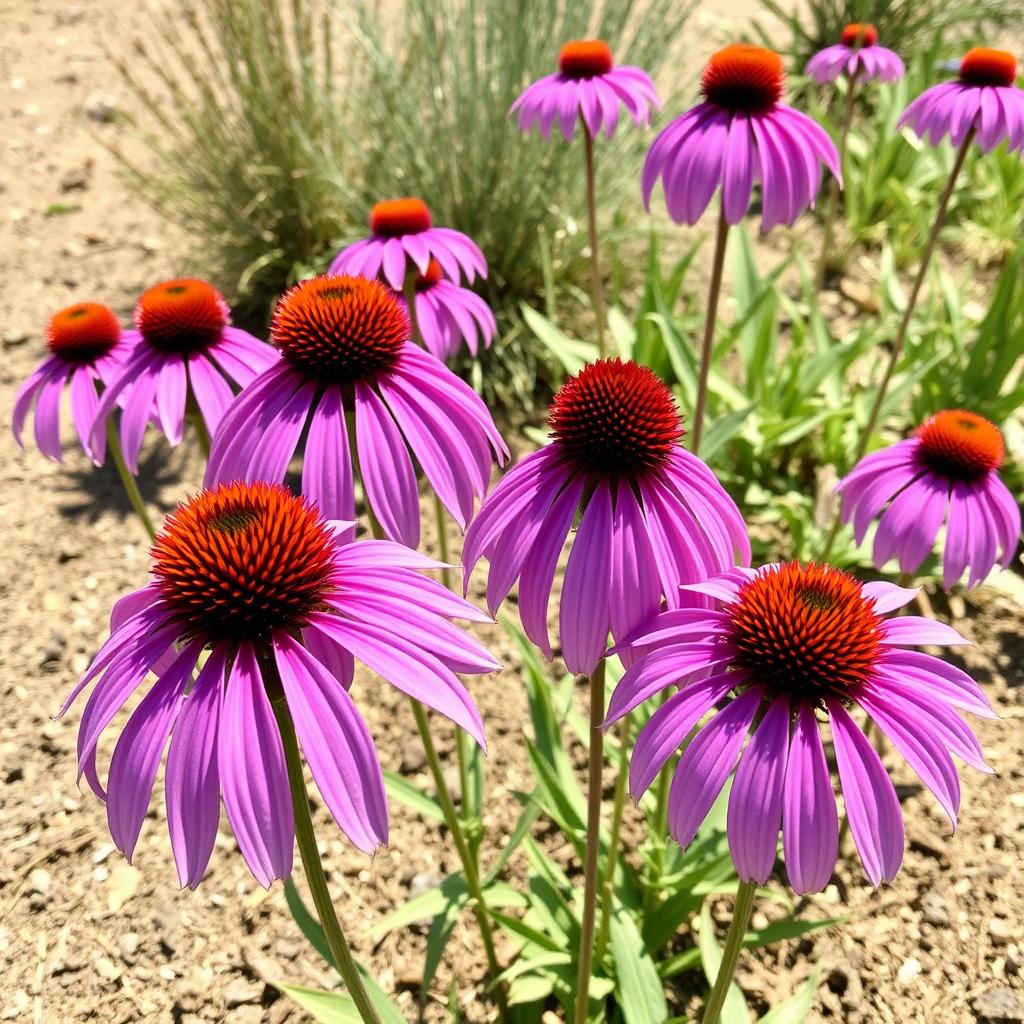
Lavender
Drought Tolerance: Extremely High
Growing Requirements: Full sun, well-draining alkaline soil, minimal watering once established.
Culinary Uses: Flowers and leaves add floral notes to desserts, herb blends, and teas. Excellent in shortbread cookies and chocolate.
Medicinal Uses: The essential oil is used for relaxation, sleep support, and headache relief. Dried flowers are used in sachets and potpourris.
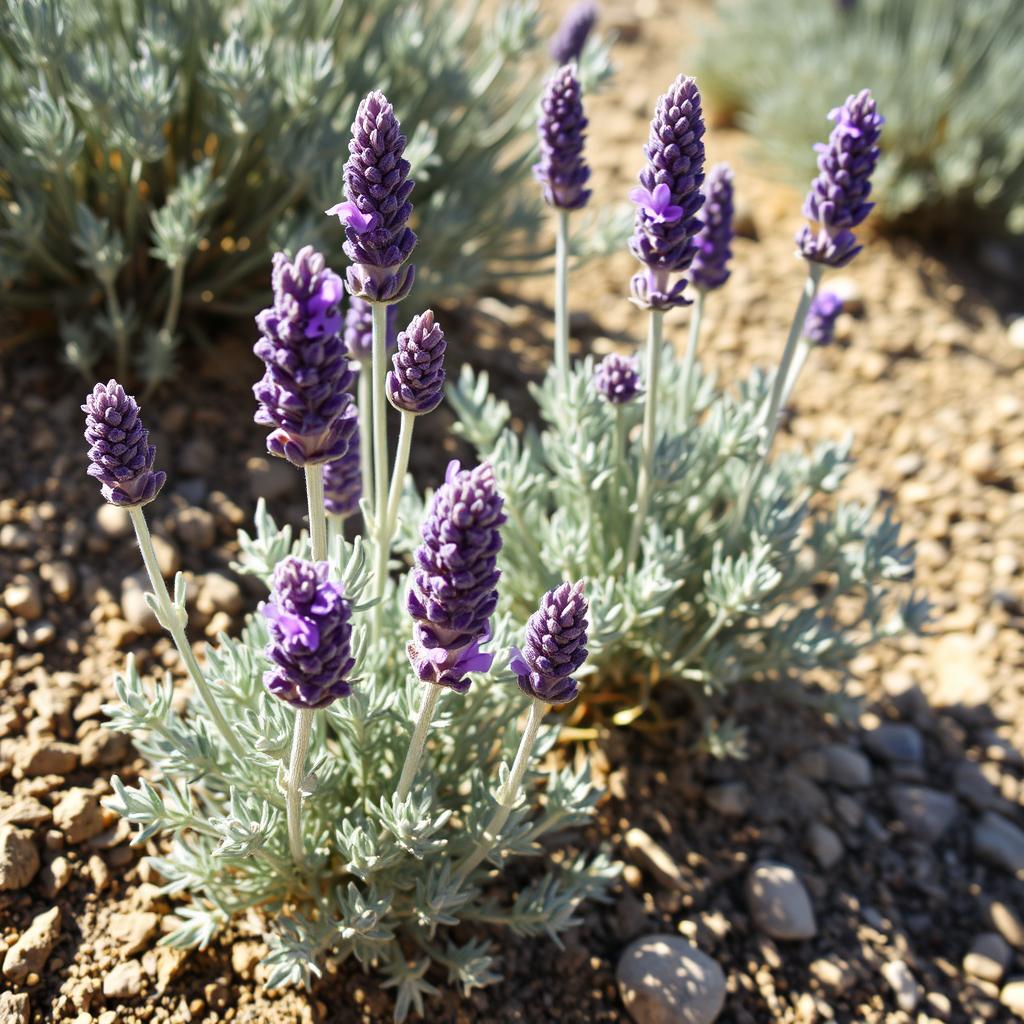
Rosemary
Drought Tolerance: Extremely High
Growing Requirements: Full sun, well-draining soil, minimal watering once established.
Culinary Uses: Essential for Mediterranean cooking, pairs well with roasted meats, potatoes, and bread. Use sparingly as the flavor is strong.
Medicinal Uses: Traditionally used for memory enhancement and hair health. The essential oil is used in aromatherapy for focus and concentration.
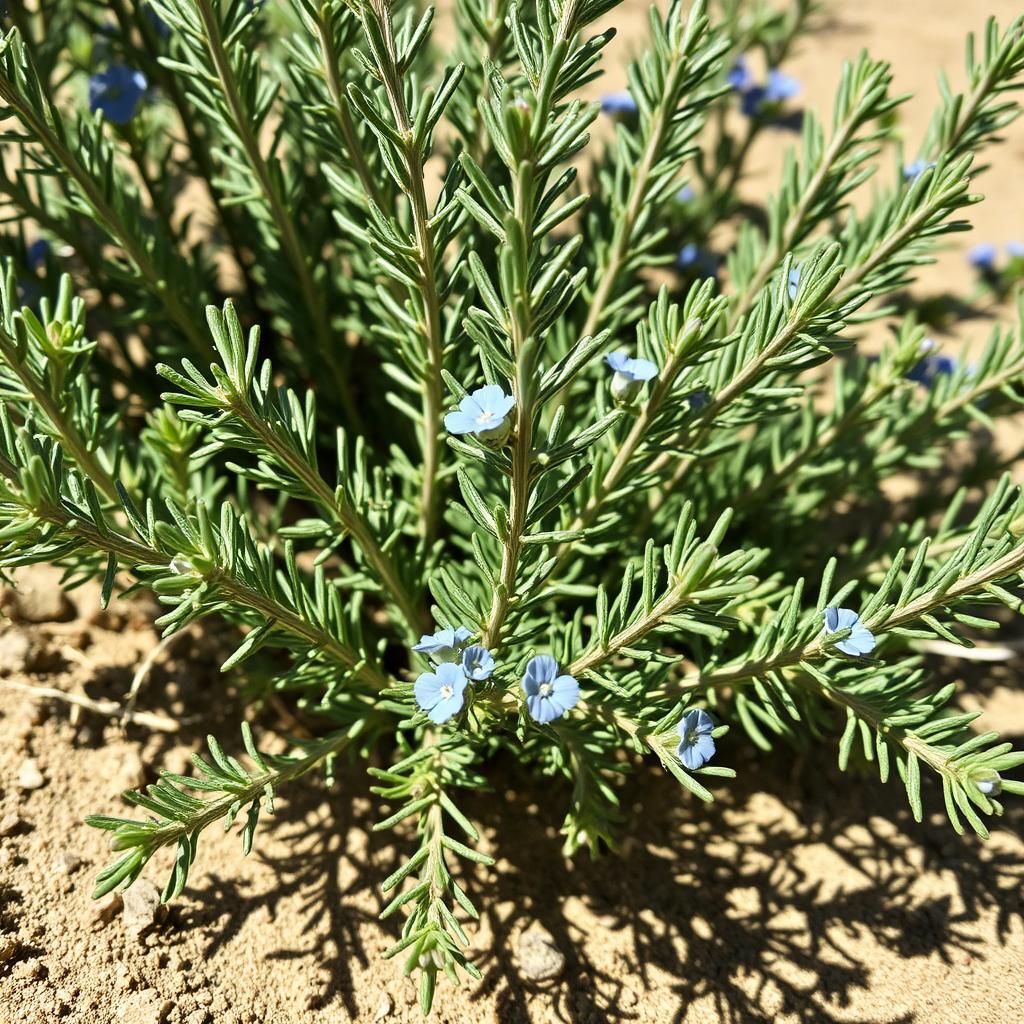
Sage
Drought Tolerance: Very High
Growing Requirements: Full sun, well-draining soil, good air circulation.
Culinary Uses: Classic flavoring for poultry, stuffing, and sausages. Fried sage leaves make an excellent garnish for pasta and risotto.
Medicinal Uses: Used for sore throats and as a gargle for mouth infections. Has antimicrobial properties and may help reduce excessive sweating.
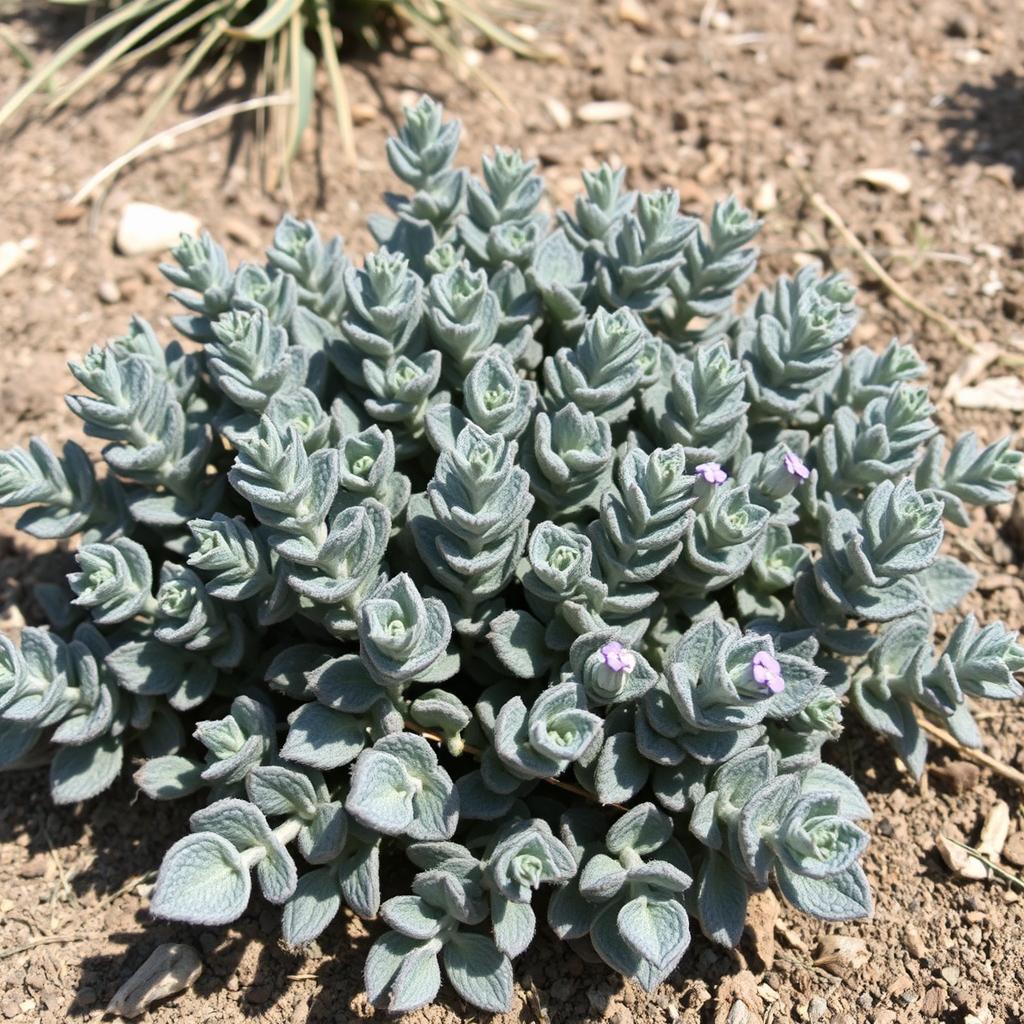
Thyme
Drought Tolerance: Extremely High
Growing Requirements: Full sun, well-draining soil, minimal watering.
Culinary Uses: Essential for Mediterranean cuisine, excellent with roasted vegetables, soups, and stews. Different varieties offer lemon, caraway, or oregano notes.
Medicinal Uses: Has antimicrobial properties, traditionally used for coughs and respiratory infections. Thymol, a compound in thyme, is used in many commercial mouthwashes.
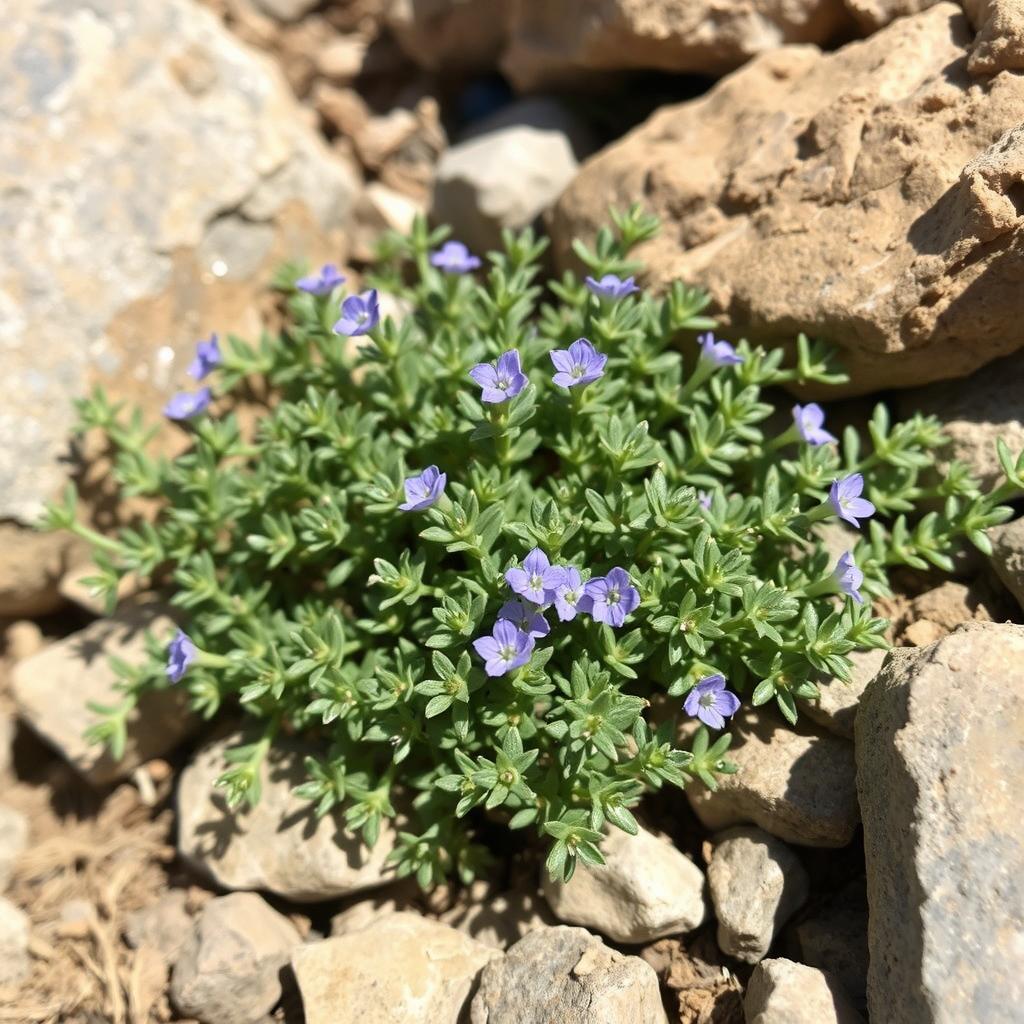
Water-Smart Growing Techniques for Drought-Tolerant Herbs
Even drought-tolerant herbs need proper care to thrive. These techniques will help you maximize water efficiency while ensuring your herbs grow strong and productive.
Soil Preparation
The right soil mix is crucial for drought-tolerant herbs. Most prefer well-draining soil that doesn’t stay soggy. Here’s an ideal soil recipe for drought-resistant herbs:
- 60% regular potting soil
- 30% coarse sand or perlite
- 10% compost
This mixture provides good drainage while retaining enough moisture for the plants to access during dry periods. For extremely drought-tolerant herbs like rosemary and lavender, you can increase the sand component to 40%.
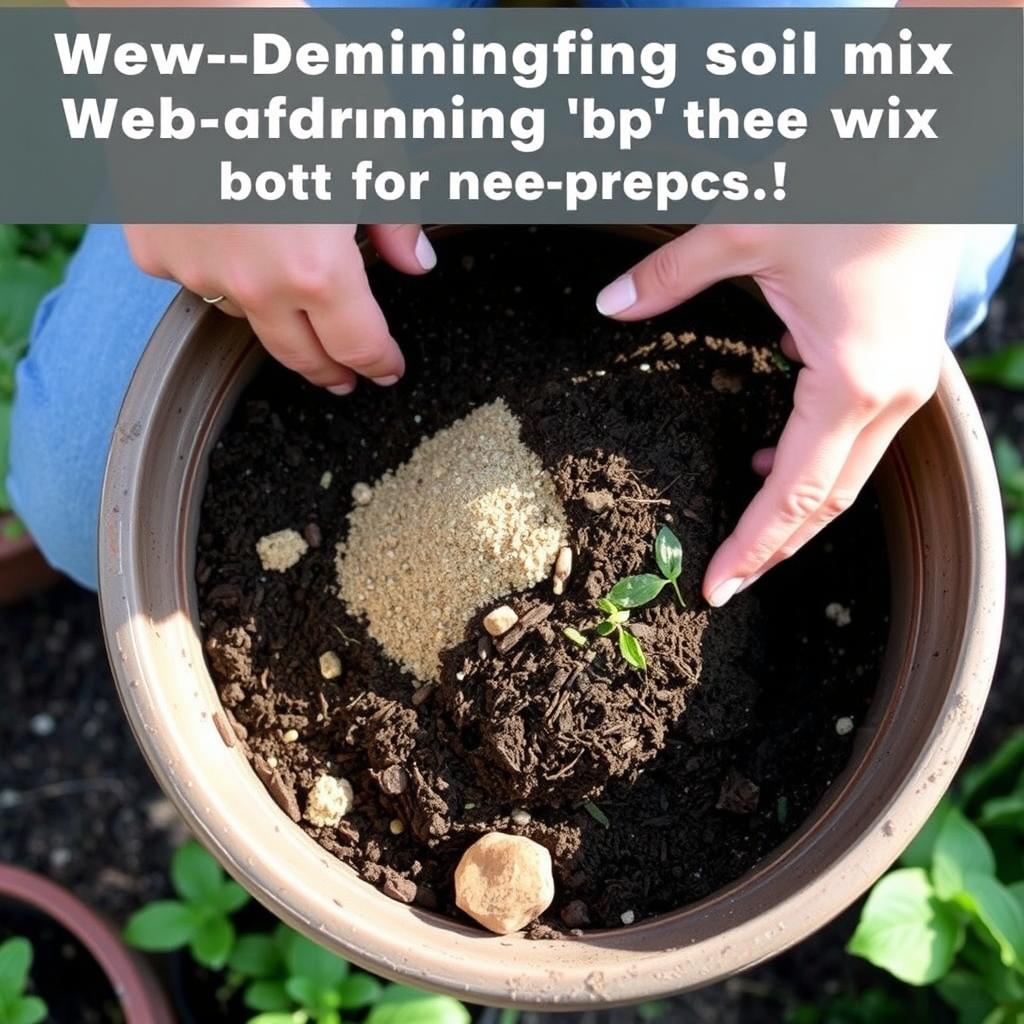
Watering Strategies
Proper watering is essential for establishing drought-tolerant herbs. Follow these guidelines:
- Water deeply but infrequently to encourage deep root growth
- Allow the soil to dry out between waterings
- Water at the base of plants, avoiding the foliage
- Water in the early morning to reduce evaporation
- Consider drip irrigation for maximum efficiency
Mulching for Moisture Retention
A 2-3 inch layer of mulch helps conserve moisture and suppress weeds. For drought-tolerant herbs, consider these mulch options:
- Gravel or small stones (ideal for Mediterranean herbs)
- Pine needles (good for slightly acidic-loving herbs)
- Straw (decomposes slowly and allows good airflow)
- Shredded bark (best for perennial herb beds)
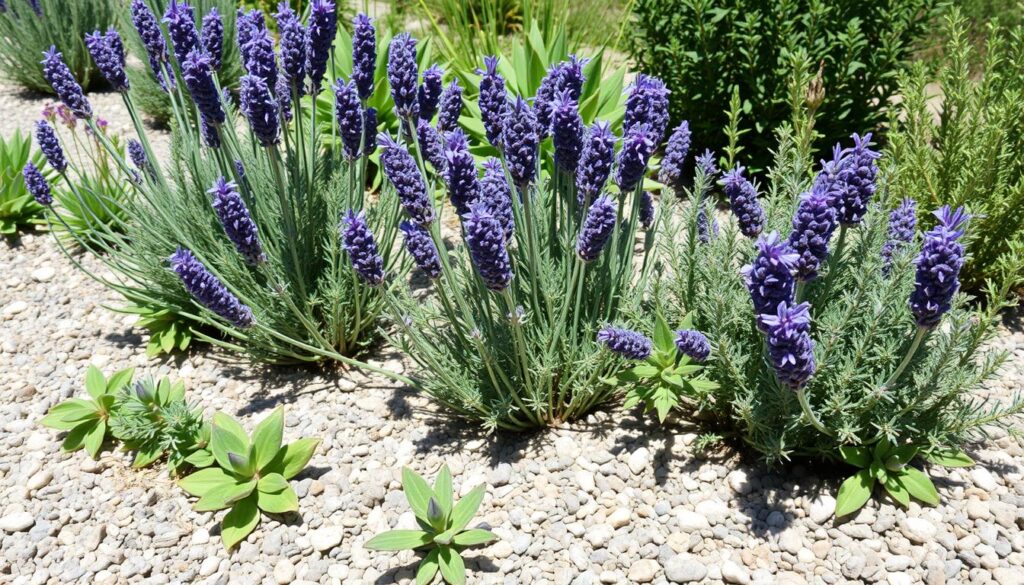
Vertical Gardening with Drought-Tolerant Herbs
Vertical gardening is perfect for growing drought-tolerant herbs, especially in small spaces. These herbs generally have compact root systems and thrive in containers, making them ideal candidates for wall-mounted planters, hanging baskets, and tiered systems.
Container Selection
Choose the right containers for your vertical herb garden:
- Terracotta pots: Allow soil to breathe and prevent overwatering
- Fabric grow bags: Excellent drainage and air pruning of roots
- Wall-mounted planters: Maximize vertical space
- Hanging baskets: Perfect for trailing herbs like thyme and oregano
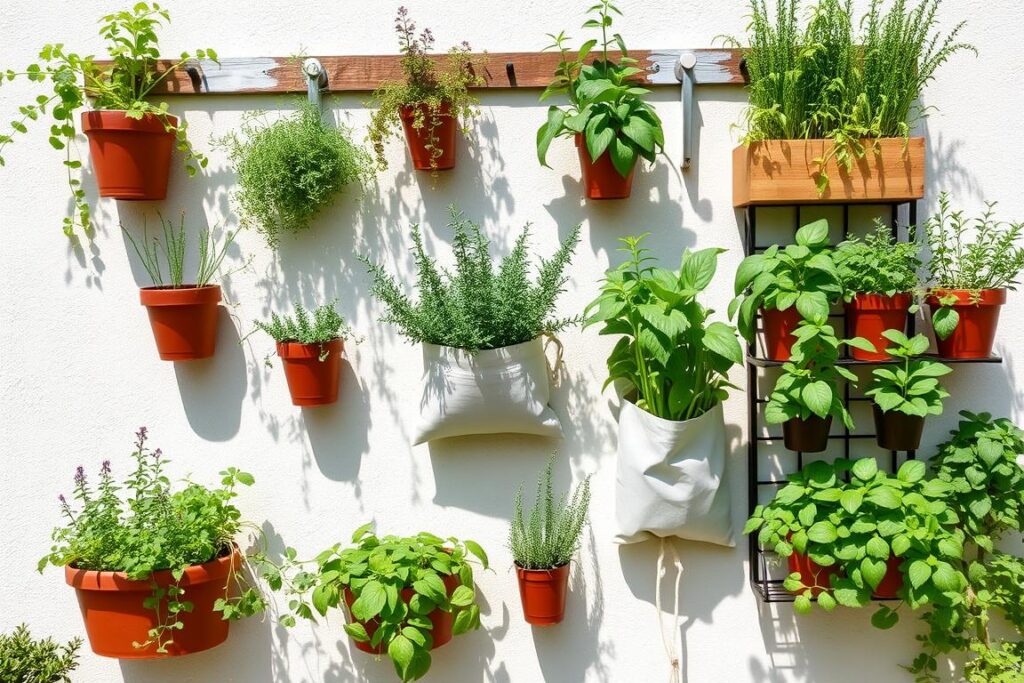
Space-Saving Arrangements
Try these arrangements for maximum herb production in minimal space:
- Herb spiral: A three-dimensional garden that creates different microclimates
- Tiered planters: Staggered levels allow for more plants in less space
- Repurposed pallets: Converted into vertical planters with multiple pockets
- Window boxes: Utilize windowsills for frequently used culinary herbs
Harvesting and Using Drought-Tolerant Herbs
Proper harvesting techniques ensure your herbs remain productive while providing you with flavorful ingredients for cooking and remedies.
Harvesting Tips
- Harvest in the morning after dew has dried but before the heat of the day
- Never remove more than one-third of the plant at once
- Use sharp, clean scissors or pruners to avoid damaging stems
- Regular harvesting encourages bushier growth and more production
- Harvest flowering herbs just as buds begin to open for maximum flavor
Drying and Preserving
Drought-tolerant herbs are generally easy to dry due to their lower moisture content. Try these preservation methods:
- Air drying: Hang small bundles upside down in a dark, well-ventilated area
- Dehydrator: Use low heat (95-115°F) to preserve color and flavor
- Freezing in oil: Chop herbs and freeze in ice cube trays with olive oil
- Herb salt: Mix chopped fresh herbs with coarse salt for a flavored seasoning
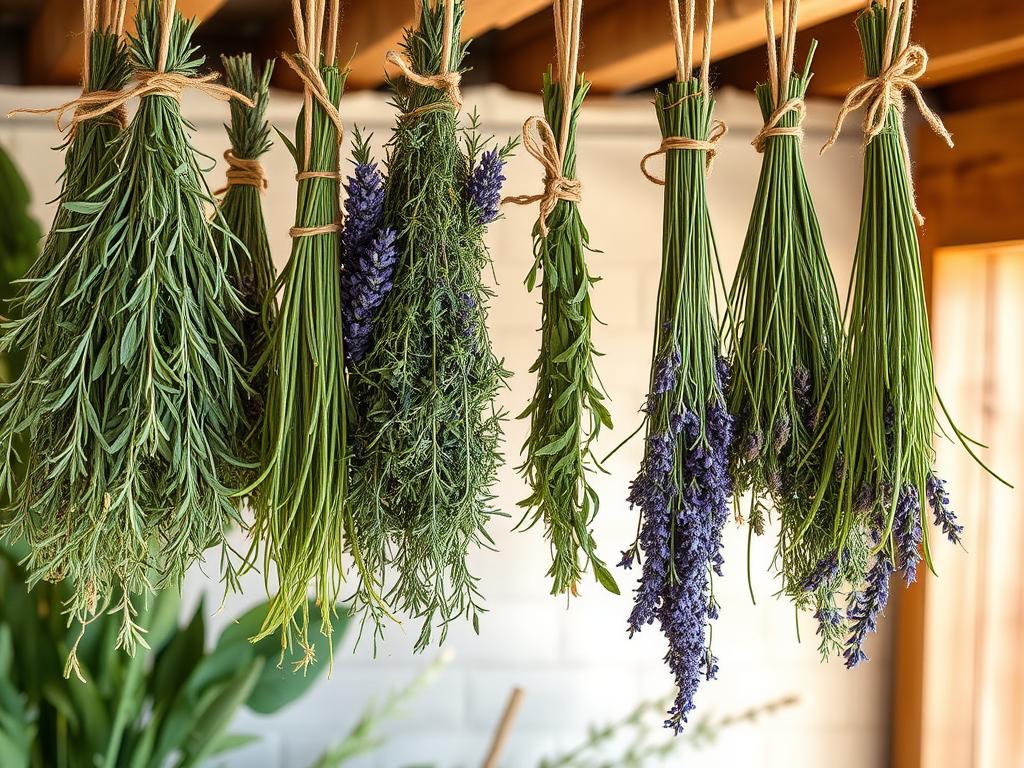
Simple Home Remedies Using Drought-Tolerant Herbs
Many drought-tolerant herbs have powerful medicinal properties. Here are some simple remedies you can make at home:
Herbal Tea Blends
| Remedy Purpose | Herb Combination | Preparation |
| Digestive Support | Rosemary, Sage, Thyme | Steep 1 tsp of each herb in hot water for 10 minutes |
| Calming Blend | Lavender, Lemon Balm | Steep 1 tsp of each herb in hot water for 5-7 minutes |
| Immune Support | Echinacea, Thyme, Sage | Steep 2 tsp total in hot water for 15 minutes, covered |
| Respiratory Support | Thyme, Oregano, Rosemary | Steep 1 tsp of each in hot water for 10 minutes, add honey |
Herbal Salve Recipe
This all-purpose healing salve uses drought-tolerant herbs known for their skin-healing properties:
- Infuse 1 cup of olive oil with 1/4 cup each of dried calendula flowers, lavender, and plantain leaves for 2-4 weeks
- Strain the herbs from the oil using cheesecloth
- Heat the infused oil gently and add 1 oz of beeswax
- Stir until completely melted, then pour into small containers
- Allow to cool completely before using on minor cuts, burns, and skin irritations
Creating Your Sustainable Herb Garden
Growing drought-tolerant herbs is a rewarding way to practice sustainable gardening while enjoying fresh flavors and natural remedies. These resilient plants not only save water but also provide beauty, fragrance, and functionality to any garden space, no matter how small.
Start with just a few herbs that match your cooking preferences and growing conditions. As you gain confidence, expand your collection to create a diverse, water-efficient herb garden that serves your kitchen and wellness needs year-round.
Remember that even drought-tolerant herbs need regular watering when first established. Once their root systems develop, they’ll reward your initial care with years of low-maintenance growth and abundant harvests.
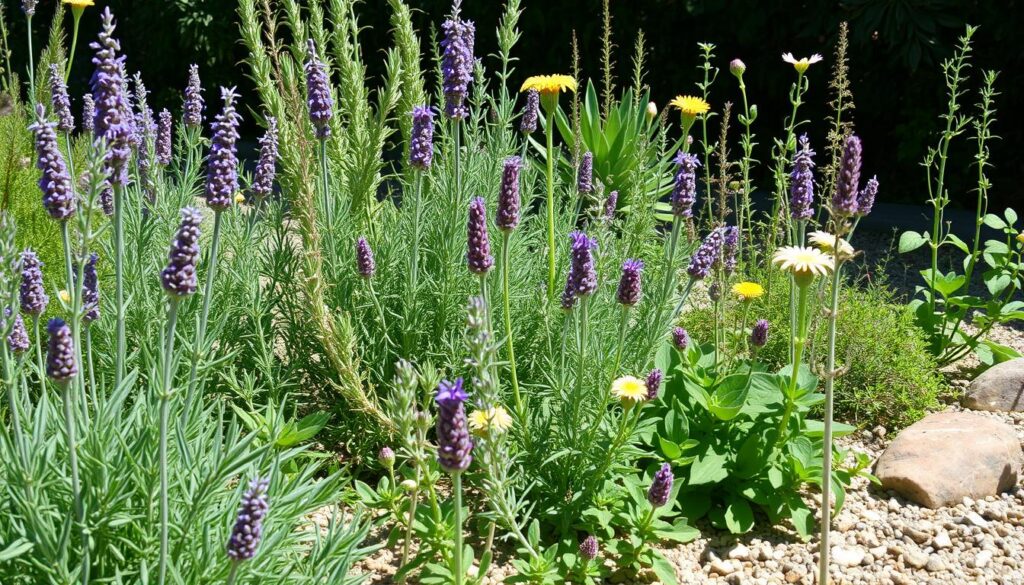
Get Your Free Drought-Tolerant Herbs Guide
Download our comprehensive PDF guide with detailed growing instructions, water-saving tips, and printable care cards for 25+ drought-resistant herbs.
Join Our Water-Wise Gardening Community
Get seasonal tips, planting calendars, and exclusive guides for growing drought-tolerant herbs in your specific climate zone.
Download Your Complete Herb Care Calendar
Get our month-by-month guide for maintaining drought-tolerant herbs throughout the seasons, including pruning, harvesting, and water management tips.
Start Your Water-Wise Herb Garden Today
Download our complete guide with planting calendars, care instructions, and recipes for using your drought-tolerant herbs.
Will is a vertical gardening enthusiast and sustainable cultivation specialist with a passion for helping people grow fresh food in small spaces and dry climates. With years of hands-on experience testing smart irrigation systems, optimizing urban gardens, and exploring eco-friendly solutions, this author shares clear, practical tips to turn any corner into a productive garden. Whether on a sunny balcony or in a compact backyard, Will helps readers save water, maximize space, and enjoy healthy harvests year-round. When not tending to his plants, you’ll find him sipping herbal tea and sketching ideas for new sustainable projects.

